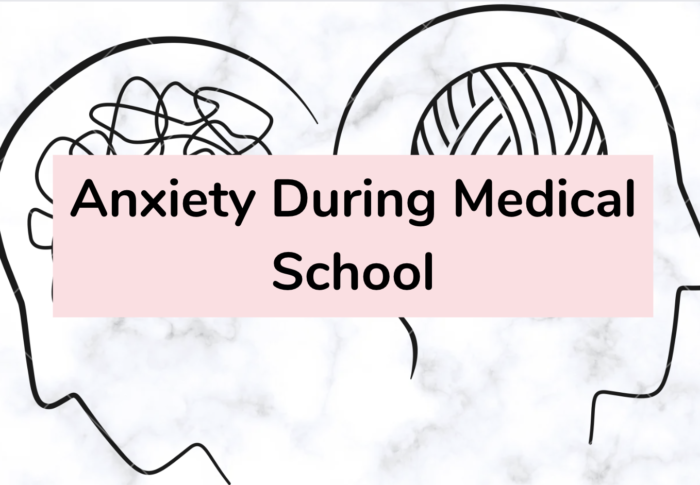
Medical School Application Timeline
The timeline for applying to medical school can be a bit confusing, especially if you are unfamiliar with all the details of the application process. From my own experience, I was always confused about the matriculation year and when the application cycle opens.
In fact, during one of my job interviews for a clinical research coordinator (CRC) position, I fumbled through the potential timeline. In front of my potential boss and the current CRC, I tried to figure out when I would take my MCAT again and when I would apply. It was quite embarrassing.
Fortunately, the CRC who sat in during this interview was also confused about the timeline. He planned on retaking his MCAT and applying in the same cycle. (In case you’re curious, I did not get that specific job but a much better one at the same hospital.)
It is important to note that the whole application process takes about a year. At the time of the interview I mentioned above, it was August 2019. I was planning on applying into the 2020-2021 cycle which meant I needed to take my MCAT prior to May 2020 or a little after.
This application cycle also meant that I would be starting medical school in 2021, a full two years after my graduation year, but this process only entailed one full building year that could go on my application. Matriculating into 2021 would mean I was in the class of 2025, which all seemed so far away in 2019.
A bit confusing right?
Overview
The application itself opens in May and you will hopefully receive an acceptance by April of the following year. However, the application process begins a bit earlier than the application portal’s opening date because you want to have most of your application ready beforehand.
Some people also receive acceptances after April/May because spots open up after everyone commits to their medical schools. These people are often waitlisted and then receive the offer by July at the very latest.
Timelines
Now the timeline is going to look different for some individuals based on when they graduate/complete their coursework and when they are ready for applying. I know many students who were able to graduate and go directly to medical school. Throughout this post, I refer to this timeline as “immediate matriculation”.
I also know many students who graduated and were able to matriculate the year after. I refer to this timeline as “matriculation with a glide year”.
Then, there are people like me who graduated and were able to receive medical school acceptances two or more years after graduating from college. I call this timeline “matriculation with a building year”.
In addition, there are also the non-traditional applicants. Their timeline is going to look a bit different based on what they need to complete for their applications. I refer to this timeline as “matriculation with building years”.
Immediate Matriculation
For students who graduated from their undergraduate institutions and matriculated into medical school that same summer, they had to take their MCAT during their junior or senior year. It is usually recommended to take it earlier so that you know your score prior to the application cycle.
However, you can submit the application with a MCAT attempt marked. These students had to have a majority of their activities complete by May of their junior year as well. It is also recommended that these students wait for their spring semester grades to be completed before they request their transcripts.
For courses that are taken during the senior year, those courses are put in the application as well. You will have to send updated transcripts to your school when those grades are available.
Essentially, you start your application after junior year courses are complete and you spend your senior year in the rest of the application cycle (completing secondary essays, interviewing etc).

Glide Year
If you don’t want to matriculate immediately into medical school, you can take a glide year. These students typically graduate from their undergraduate program and submit their applications in May. In terms of the MCAT, these students complete the exam when they are ready any time before or after they graduate.
They will apply in the May, but have a year to focus on other activities before they matriculate into medical school. These activities can be included in an update letter to medical schools if you want. However, this route is best for people who are ready to apply at the beginning of their senior year. There is not enough time to really build a weak application with the glide year approach.

Building Year(s)
There are a few reasons why building years are becoming more common. One reason is that it gives students a break before going back to school. Another reason is that it helps students ” build” their applications so they are more competitive. Some students use this time to financially prepare for the application cycle. In my experience, I was able to improve my application, take the MCAT, and earn money to cover some of my application costs.
Applying with a building year or multiple building years also gives you more time to focus on your application. You have more time to study and take the MCAT. There is also more time to perfect your writing for your personal statement and experiences.
The decision to take a building year really helped me. Building years are also becoming more common as the average age of students matriculating into medical school is 24 years old. You can find this data that the AAMC published in 2018 here:https://www.aamc.org/system/files/d/1/321468-factstablea6.pdf.
They also have other data that is more popular here: https://www.aamc.org/data-reports/students-residents/interactive-data/2020-facts-applicants-and-matriculants-data.

Nontraditional Students
For non-traditional students, you will have to base your decisions off of the courses you need to complete, the experiences you need to show clinical exposure, and the MCAT. This journey is widely different for every non-traditional student I’ve met. It depends on their previous career, their family status, and so many other factors.
The bottomline for these individuals is that is not too late to go to medical school and you can do it! Every non-traditional student I have met has been amazing and so incredibly interesting. I think these students have so much promise and I find them very admirably. If that is you, please do not give up.
Note on MCAT:
I mention taking the MCAT earlier and only once. You can take it a total of 7 times in a lifetime with specific parameters in a calendar year. Taking it once is the ideal situation but do not worry if you take it multiple times. You just need to make sure you show improvement.
Additionally, you can submit your application to one “throwaway” school in May if you have a MCAT scheduled in June or later. However, you should only do this if your practice scores are in the ballpark of the MCAT score you need for your medical schools.
Overall, these are the general timelines for individuals. However, every individual is unique and this linear journey may not describe you. That is perfectly fine. Comment below if you have any questions!






